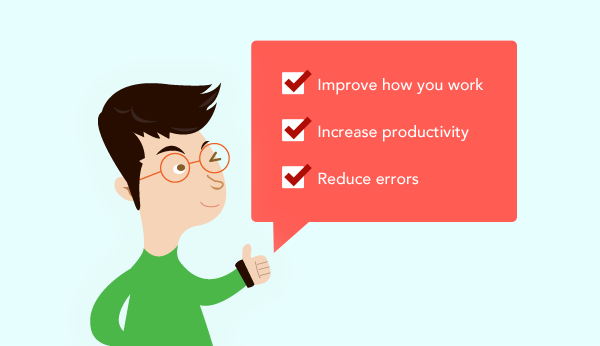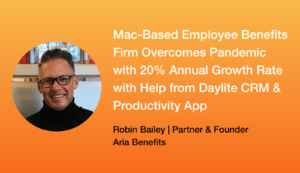Being an entrepreneur can definitely be challenging. You have so many things on your plate and they’re all important and need to be done right. If they’re not, you risk losing business. With so much on your plate, it is easy to forget what you have to do next when you’re constantly at risk of dropping the ball.

Keeping track of everything you have to do can almost be as difficult as actually doing the work. And if you skip a step, it can result in losing clients. Fortunately, there is an easy remedy to help you do more and make fewer mistakes: the humble checklist.
We recently started book club at Marketcircle where we read about improving productivity, self-development and communication. One of the books we recently read was The Checklist Manifesto: How To Get Things Right by Atul Gawande. In this book, Gawande explains how checklists help you focus on your work instead of remembering each next task. This way you save time and make sure you’re doing things right, with less risk of skipping any crucial steps.
Gawande offers great insight, using real world experiences from the drama of the operation theatre, to environments with zero margin of error like flying a plane or constructing buildings. Gawande shows us time and time again, to err is human.
From the Checklist Manifesto, we wanted to share 3 ways you can use checklists to help prevent mistakes and keep you winning over and over again.
1. Break Big Things Into Smaller Pieces
Most of your daily tasks are a series of small tasks. Only when you finish each subtask, is the job done. Trying to remember every step of everything you do is stressful. Not to mention your brain is not fool-proof and will inevitably make mistakes.
“The volume and complexity of what we know has exceeded our individual ability to deliver its benefits correctly, safely, or reliably.”
― Atul Gawande, The Checklist Manifesto: How to Get Things Right
Breaking down your to-dos into smaller chunks gives you a better picture of everything you need to do, and makes it easier to tackle. For a photographer, forgetting even one piece of your equipment can turn a photo shoot into a nightmare. There are so many things you need to remember and much of it is easy to forget.
One way you can help avoid misplacing anything, is by using Daylite to create a primary task, and then breaking that task down further into subtasks. For example, make the primary task “packing your equipment” and add subtasks for each item ahead of time. This way you can check off these things on your iPhone as you pack to make sure you have everything.
Forgetting the small things will be a thing of the past when you start to implement more checklists into your workflow.
2. Improve Communication for Everyone
You probably find yourself working with different vendors, clients or other people who can affect the outcome of your work. Keeping track of your workload can be hard enough. Relying on other people to do their job just adds to the stress. If you aren’t keeping on top of everyone at the right moments, everything can come to a standstill, which costs you time and money.
“One essential characteristic of modern life is that we all depend on systems—on assemblages of people or technologies or both—and among our most profound difficulties is making them work.”
― Atul Gawande, The Checklist Manifesto: How to Get Things Right
Part of a checklist can include who you need to talk to, when, and what key points need to be confirmed along the way. This way you’re ensuring that everyone is on the same page and things are progressing forward from all angles. By establishing this in your checklist, you define how to communicate with these other groups.
Every step of the way, you can make sure everyone has been consulted with, been given permission, or has all the resources you need to progress further.
One way you can achieve this in Daylite is by creating an Activity Set. An Activity Set is a series of tasks that need to be completed in order. Part of this Activity Set can be to confirm with various people what needs to be done.
For example, in real estate this could mean keeping track of everything from the moment someone accepts the offer to handing over the keys. Do you need to have an inspector walk through the house and sign their approval? Are there things you need to discuss with the inspector and new home-owners before movign forward? What paperwork does the new owner need to complete? Have they submitted it to their lawyers, banks, etc?
When creating an Activity Set, you can leave it as a simple list of tasks, or set the timeframe that each one needs to be completed in sequence.
Your checklist will make sure there is a smooth flow of information. You know who you need to talk to next, and who is holding up progress.
3. Empower Your Team to Work With Confidence
You’re the lead in many projects, but you likely rely on a team of people who assist you all the way through. Your team trusts you and your judgment, but if you haven’t explicitly told them they can correct you they may not feel confident speaking up. They may notice something is amiss but believe that you intentionally skipped a task, that some details doesn’t matter, or that they simply don’t know how to talk to you, the boss.
When your team doesn’t speak up, this is a lost opportunity to correct a problem before it becomes an issue.
“We are not omniscient or all-powerful. Even enhanced by technology, our physical and mental powers are limited.”
― Atul Gawande, The Checklist Manifesto: How to Get Things Right
One way you can help empower your team while you work in Daylite is by linking your entire team to the projects you are all working on. If you don’t use projects much, try a shared Smart List of tasks. By keeping everyone in the loop and part in the process, you set a clear expectation that completing the checklist is, in part, everyone’s responsibility.
You may think you are ready to file a motion, but a crucial affidavit is missing. Human error can be detrimental to your case and cause great harm to your client. By using projects to keep track of the tasks for each of your cases, and linking each person to the project, you have a checklist that everyone can see.
Before you proceed with your motion, everyone can go through your checklist and confirm what’s been done. The missing affidavit is caught, and you can recover it before you file the motion.
When everyone is equally responsible for a task and knows what the expectations are, you have more people watching your back and helping you succeed.
Checklists can seem so simple and obvious, but why aren’t we using them more? Atul Gawande has maybe said it best:
“We don’t like checklists. They can be painstaking. They’re not much fun. But I don’t think the issue here is mere laziness. There’s something deeper, more visceral going on when people walk away not only from saving lives but from making money. It somehow feels beneath us to use a checklist, an embarrassment. It runs counter to deeply held beliefs about how the truly great among us—those we aspire to be—handle situations of high stakes and complexity. The truly great are daring. They improvise. They do not have protocols and checklists. Maybe our idea of heroism needs updating.”
― Atul Gawande, The Checklist Manifesto: How to Get Things Right
Start using checklists today and spend less time worrying about what you have to do next and making mistakes. When you do, your business will start to run smoother when working with others and empower your team to speak out when they see any issues.


